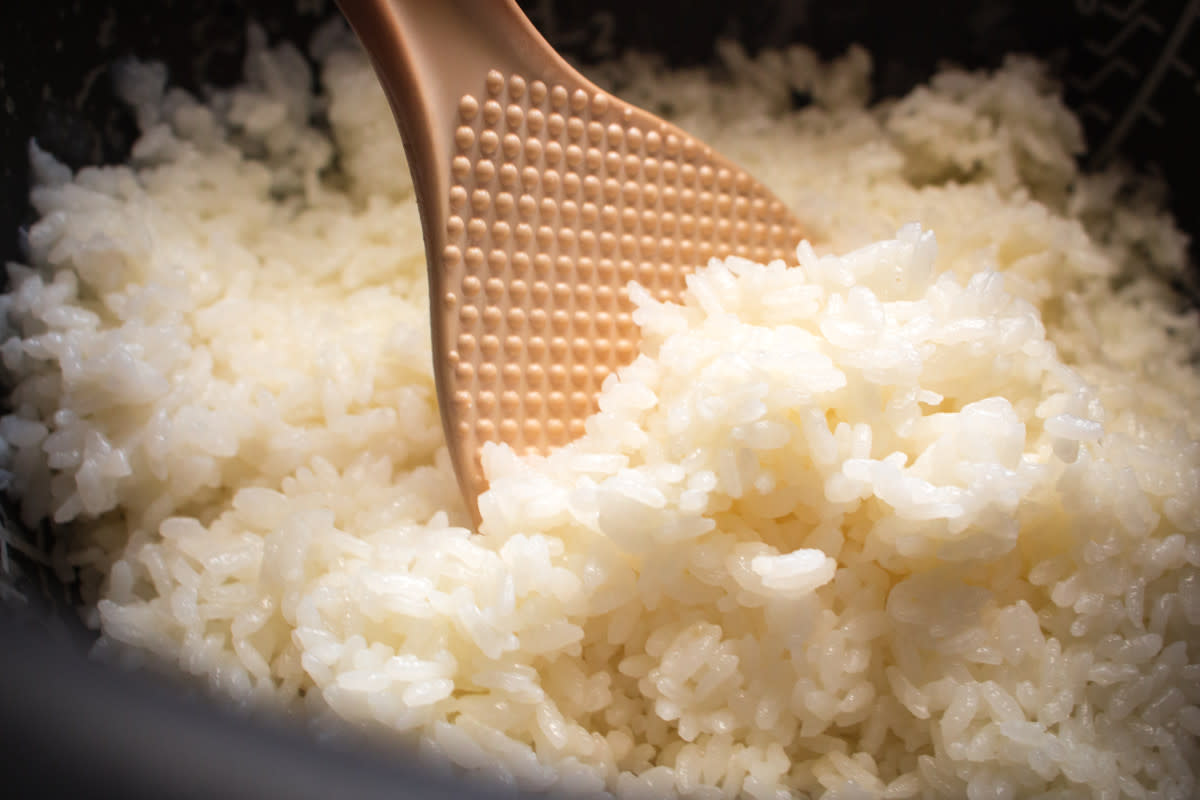The Ideal Rice to Water Ratio For Making Perfect Rice Every Time

rice in rice cooker
As simple as the staple side dish can be, there are far too many ways to mess up when you’re cooking rice. To transform hard grains into a nice and fluffy rice, it's necessary to combine the rice granules with liquid and apply enough heat until it absorbs enough moisture to be palatable—basic enough, right? It's easier said than done. Too much water can lead to mushy results and too little can cause the rice to remain undercooked or burn. Disappointment has a name, it's a sad bowl of rice. That's why we turned to some experts for their thoughts on the best rice to water ratio and other tips and tricks they have for cooking the perfect batch of rice every time.
Why You Need a Rice Cooker to Cook Rice
Using a rice cooker can help the layperson cook rice to perfection—that is, soft but not too sticky. The countertop appliance regulates the cooking time and temperature based on the type and amount of rice you’re cooking for consistent results every time, says Marilyn Matsuba, marketing manager of Zojirushi America Corporation, which manufactures rice cookers.
Related: 75 Easy Rice Recipes
How Much Water You Need to Cook Rice
It’s not sorcery—it’s science: When you add rice and water to a rice cooker, the machine raises the temperature to 212 degrees Fahrenheit. This creates steam that’s captured under the lid which cooks the rice. Yes, it’s easy-peasy, but you still need to get the rice to water ratio just right.
While a popular ratio is 1:1, which can work just fine, expert rice cookers agree there’s a better way—and not just because your rice to water ratio should be different depending on what kind of rice you’re cooking. (Tougher grains such as brown rice require more water to soften the bran while options like basmati just happen to absorb more moisture than say, jasmine or long-grain rices, Matsuba says.)
Related: 3-Ingredient Salsa Rice Is an Easy, Cheesy Taco Night Side Dish
Cookbook author and chef-consultant Hiroko Shimbo says using a 1:1 rice to water ratio when preparing long-grain rice in a rice-cooker ensures that the rice comes out well, but the rice may lack the “super fluffiness found in Indian take-out rice.”
Her ideal ratio is 1 cup minus 2 tablespoons rice to 1 cup of water—so just a bit more water than rice. Another key component to her technique is pre-rinsing and drying the rice, which rids it of excess starch that can contribute to stickiness.
Rice to Water Ratios Guide
Here are rough guidelines for larger quantities of white or brown rice, according to Shimbo:
Type of rice | Dry rice volume | Water volume |
Polished white | 2 ¼ cups | 2 4/5 cups |
Unpolished brown | 2 ¼ cups | 4 ½ cups |
Other Ways to Measure Water for Cooking Rice
Because not everyone wants to start doing math every time they get a craving for rice, some rice cooker models provide a measuring cup for rice and water fill lines for different rice varieties. “Everybody likes the ‘finger’ or ‘knuckle’ method to measure water, but we cook tons and tons of rice when developing our rice cookers to ensure that the rice comes out perfect every time,” says Matsuba.
The recommended ratios stand true when subbing broth for water—liquid is liquid. When incorporating cooked beans, dried fruit or spices, it’s best to use a mixed rice setting on your rice cooker for a longer preheat time and lower cooking temperature, Matsuba says, since this will help the extra ingredients to absorb water and prevent burns.
Related: How to Cook Dried Beans in the Instant Pot
Regardless of how you plan to serve your rice, it’s best enjoyed when cooked correctly–so try the ratios above to hone your technique before your next rice feast.

